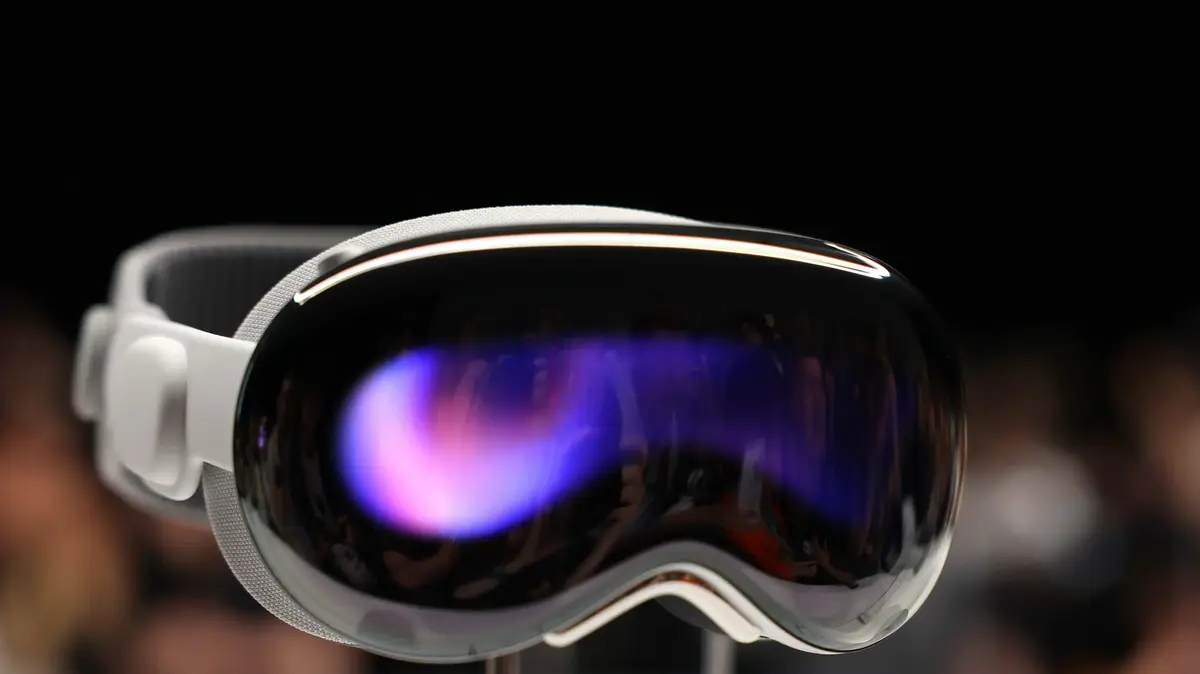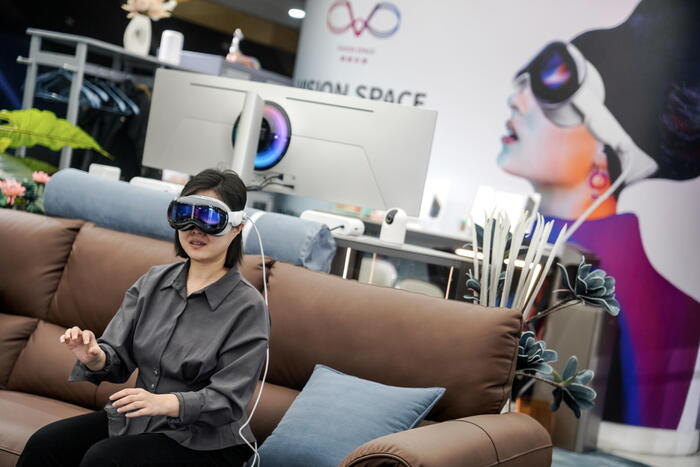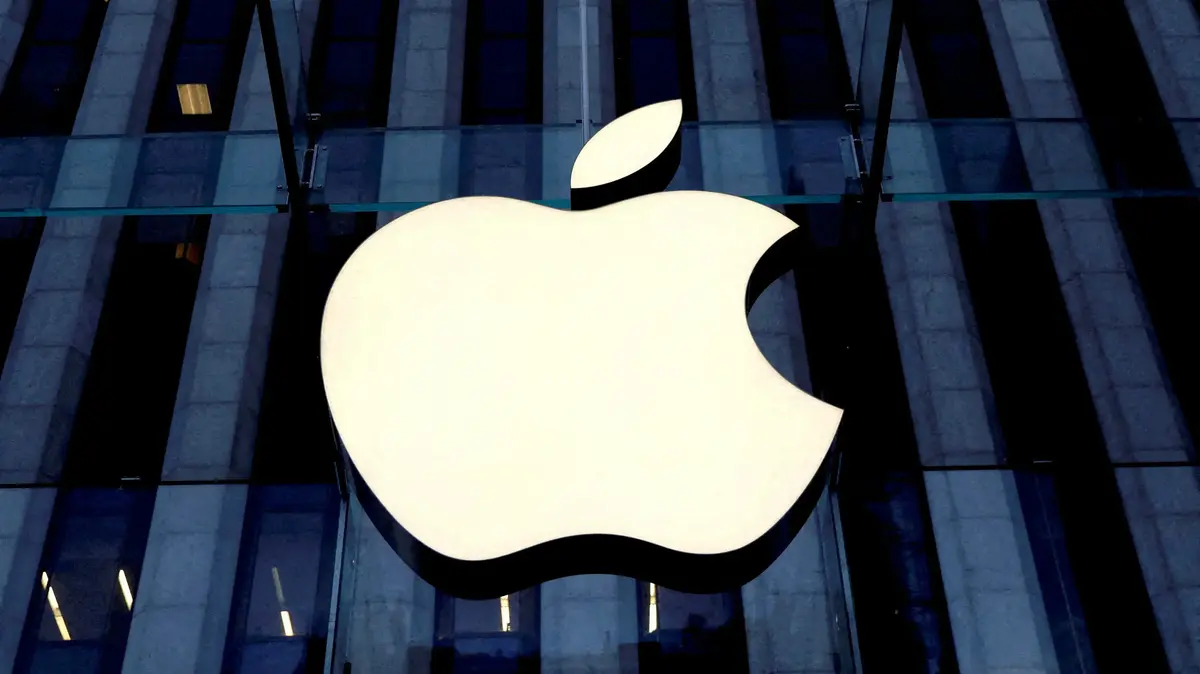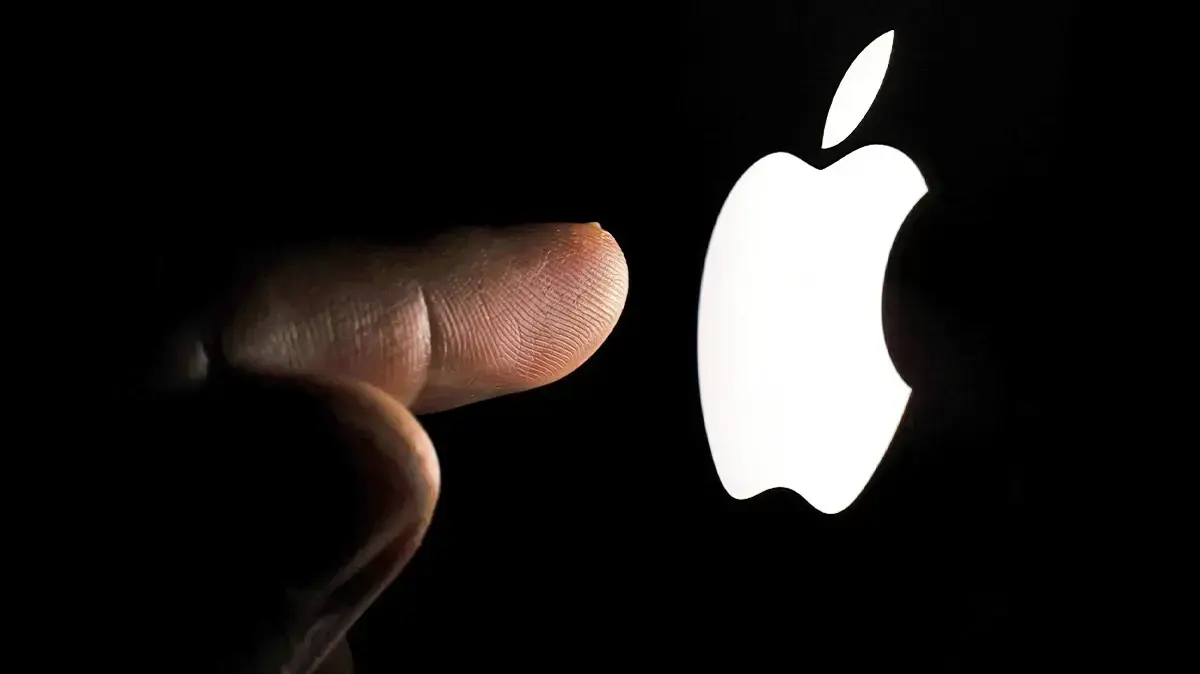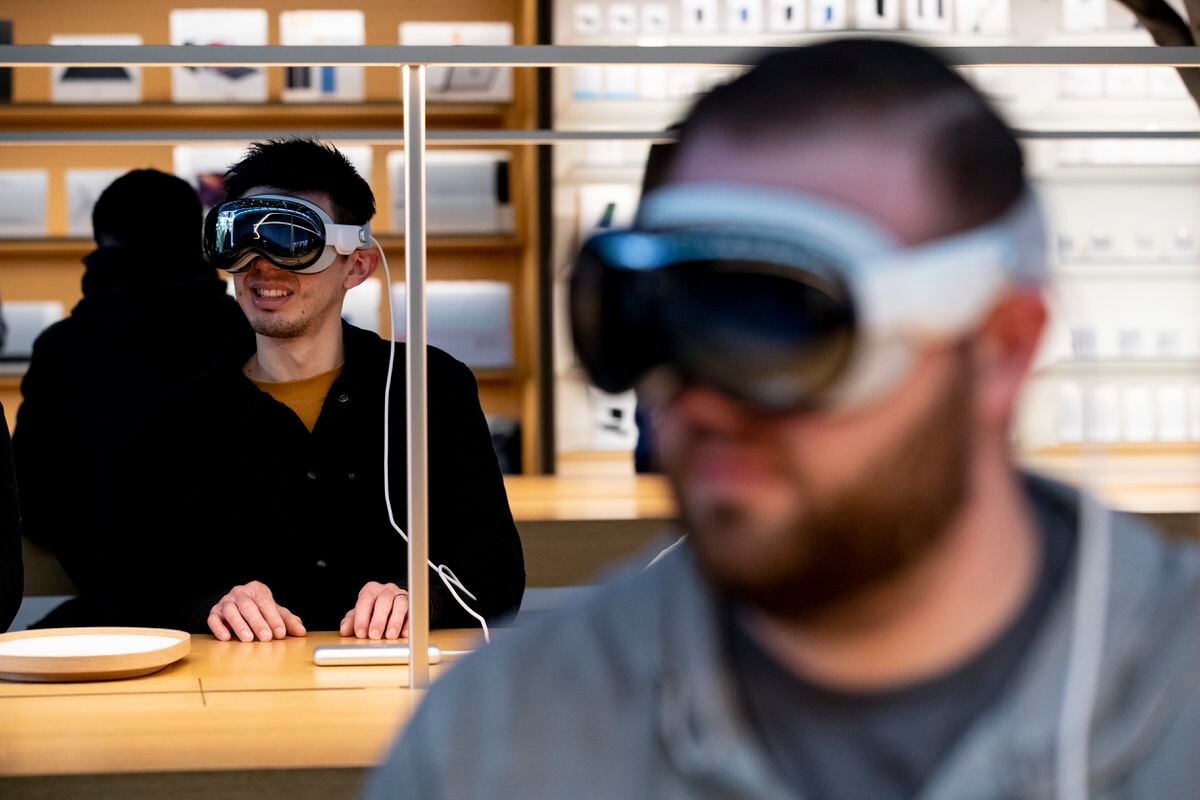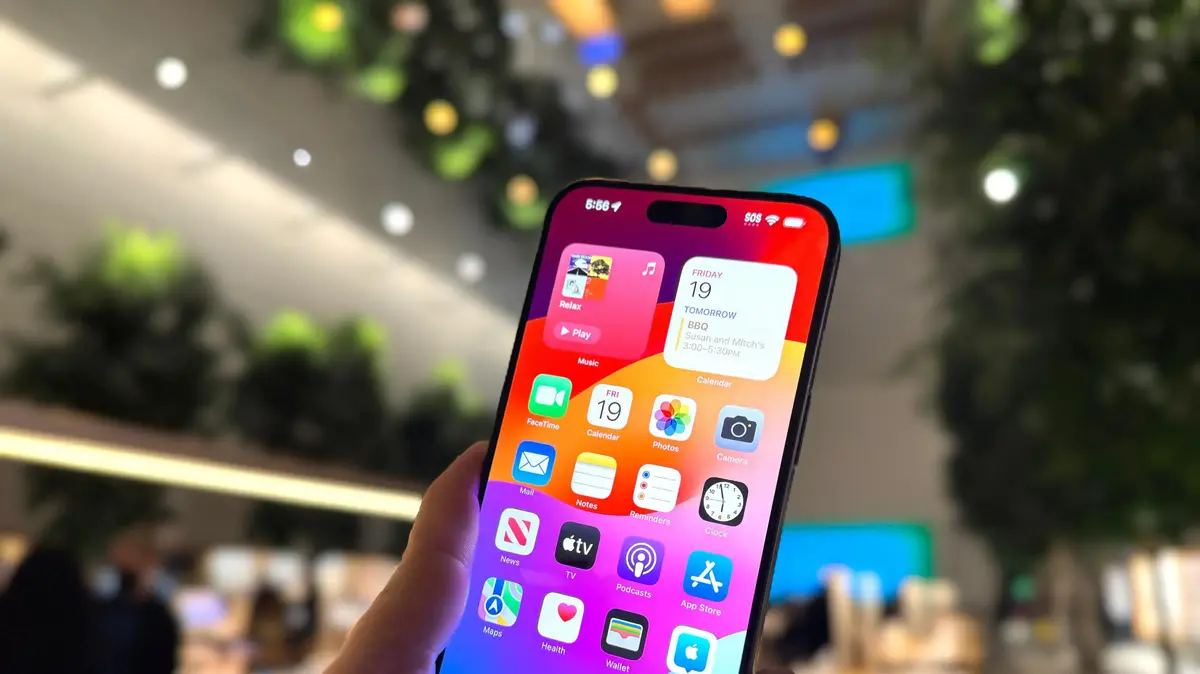Apple presented on Monday one of the most anticipated secrets of recent technology: its augmented reality glasses, the Vision Pro. They will arrive in 2024 only to the US and to "other countries" throughout the following year. The price was a resounding certainty: 3,500 dollars (3,270 euros today). It is expensive, but Apple boasted of having created an impeccable product with more than "5,000 new patents" that has taken "years to make". A handful of engineers and designers were free on Monday to show off that hidden object they had worked so.
Overwhelming day today. Worked on this project for most of my Apple career, contributing to core interactions, productivity, and bringing SwiftUI into space. Extremely difficult problems, humbling. Thousands involved. Congrats to the whole team for bringing this to fruition. pic.twitter.com/jul6kQY1t5
— Sam Iglesias (@siglesias) June 5, 2023
From there, there are already more doubts than certainties. At the moment they have only been tested for 30 minutes by a handful of journalists and technology influencers who attended the event. And without being able to record it. These are some of the doubts or questions generated by the new device, destined to be, according to Apple, the new platform of "spatial computing", after the personal (the Mac) and the mobile (iPhone).
1. The photos that didn't come out. Tim Cook, Apple's CEO, kicked off the 40-minute presentation of the Vision Pro. Then he took pictures next to the glasses, but no, and this is important, with the glasses on. Neither he nor any of the Apple executives who spoke put them on. Why? Maybe to avoid memes. Nor was there a photo of someone with the glasses on the street. Everyone was in enclosed spaces with hardly any movement. Only one parent kicks a loose ball at a little girl or another kneels to take a photo.
Because they saw this: pic.twitter.com/IsOmtUze6c
— Andy Bobrow (@abobrow) June 6, 2023
A third photo that could not be seen was that of someone doing some kind of physical exercise, which is one of the big sales of Meta's glasses. Apple has a reputation for launching a product and waiting to see where users and developers take it.
2. The words that were not spoken. It was already suspected that they would not say "metaverse" throughout the presentation. But what other expression was hardly used? "Virtual reality." These glasses are designed to live with the world, not so much to get out of it. Although you will also have that option to watch 3D movies or play video games. Meta can breathe a little easier after checking that the Vision Pro aspire to another type of use, although they seem clearly better. Meta's Quest Pro glasses went on sale for 1,800 euros, although they later fell to 1,200.
3. The great success. In the articles or videos of the people who have tried them, two things stand out above all: the tracking of the eye and the hand and the definition in the images. The glasses don't come with built-in controllers, but instead detect where you look and click with your fingers. That click is to put index and thumb together: will that gesture become a meme? To type, you can click on virtual keyboards or directly speak.
A general problem with augmented reality glasses was the low quality with which both the outside world and the images were viewed. Apple seems to have figured it out. For example, it was not easy to read text in a browser because of the lack of resolution, but the Vision Pro boasts that they make it possible.
4. The big chill. The surface of the glasses is opaque. To see the environment from the inside, cameras look out and play the content on the screen. According to those who have tried it, it looks great, although it is still video: it is not reality.
imagine paying $3500 plus tax to look like this when someone walks in the room to have a serious conversation with you pic.twitter.com/eFclrVY74X
— Casey Johnston (@caseyjohnston) June 5, 2023
The new problem arises from the opposite perspective: people who see from the outside who wears the glasses. The device "emits" the eyes on the surface of the glasses and mimics their movement. It causes a bulging eyes effect, like minions, which promises great jokes. If the wearer of the glasses is watching a movie, from the outside his eyes are not visible, but the moment there is interaction with the outside, his eyes jump.
5. Latency, discomfort and dizziness. A big problem with VR glasses so far was discomfort and dizziness. Apple has solved, it seems, one: dizziness. The feeling of restlessness was caused by latency. The computing in the glasses does not go fast enough and the temporal microdifference between what we expect to see and what we see produces dizziness. That latency has been greatly reduced in the Vision Pro, according to those who have tested it.
it's *so hard* to get people to wear technology, particularly on their faces, if it doesn't confer an immediate benefit (ie glasses). companies have tried & failed for years to popularize headsets. it'll be fascinating to see how this plays out for apple.https://t.co/bIqbIIIhQD
— Rachel Metz (@rachelmetz) June 5, 2023
But it is still a heavy junk, which can wear a headband to make it more acceptable. The glasses are metal and glass, not plastic, which is coarser but weighs less. Who will want to work for several hours with a kind of motorcycle helmet on their head? Of course, there are already memes:
POV: you just had a long day at work in 2035 pic.twitter.com/zeXY0BKvBE
— gaut (@0xgaut) June 5, 2023
6. Will it convince the public? The big question will only be solved by time: how many people will believe that these glasses are indispensable in their lives. For the price alone, that figure will inevitably be small in the first few years. But will the feeling that "you must have those glasses" expand over the years, as happened with the iPod, the iPhone or the iPad?
The price will inevitably fall and perhaps also the size and weight. It will also improve the life of the battery, which is now 2 hours and on top of that you must carry it in your pocket connected with a cable. But it remains to be seen if socially we will evolve to be grateful for having huge screens to work on, being at home recording our children's birthdays in 3D and even if we want to take walks with them. The idea is that it is a computer that we can take on a trip, for example, without needing anything else. That is one of the best options for the future: how will those glasses end up being used, if at all?
Google Glass, circa 2013: failed miserably because people looked dumb wearing it
companies in 2023: people will wear this pic.twitter.com/8JDJIa65XU
— Tyler Glaiel (@TylerGlaiel) June 5, 2023
7. A sadly individual experience. Maybe society will change, but Google Glass was already smaller and was exterminated because nobody liked to be around someone who could record you. These glasses also do exactly that. In the presentation, a father appears filming his daughters with their glasses on. The mobile does something like that, but it separates, it does not isolate.
Logically, they are glasses for individual experiences: it is sad to see in the presentation a father remembering moments with his children, to "relive" it, as if he could no longer do it in real life. The movies are also very nice, but you can't share with anyone that you're watching them. Will it be necessary to have three glasses at home and give the play all at once?
It feels a bit like it's designed for people with no friends and who live alone and who perhaps are not really allowed to see the kids any more. pic.twitter.com/BeTAClmb0w
— Tom Goodwin (@tomfgoodwin) June 5, 2023
To counter this, Apple showed Facetime, a video calling app, as one of the big apps for its glasses. It also solved the big question about how others see you if you wear your glasses: they see a digital reproduction of you that moves according to the facial expressions that the cameras detect. It's not an ugly avatar like the one in the metaverse, but it's not your own face either. And does that greatly improve the Facetime experience in front of the mobile or the computer, besides not having anything in your hands and being able to move?
8. What about privacy? Apple bragged about its privacy protection, as always. It has been one of its strengths with the iPhone and the company serves to distance itself from Meta, which lives on advertising. Nothing you record will leave the device, they said. But to use it, personal identification will be the iris of each user, which seemed the last frontier of individuality. There is a company called Worldcoin, co-founded by Sam Altman, that aims to collect the irises of all humanity in order to identify us all. It's allegedly a bad idea, but if Apple does it directly with its glasses? It will no longer seem like such a major problem.
1990's Parents: Don't sit so close to the TV 2023: You are the TV
Now#VisionPro pic.twitter.com/rkZARkVDQO
— Kryspin (@djkryspin) June 5, 2023
Be that as it may, this is the initial version of a revolutionary product manufactured by a company that has earned, at least, the benefit of the doubt. Will we write articles like this with glasses and generative artificial intelligence in 2030? At least, things will no longer be like in the 80s and 90s, when a famous request from parents was: "Girl do not get so close to the TV". Maybe we end up wearing one over our eyes.
You can follow EL PAÍS Tecnología on Facebook and Twitter or sign up here to receive our weekly newsletter.


